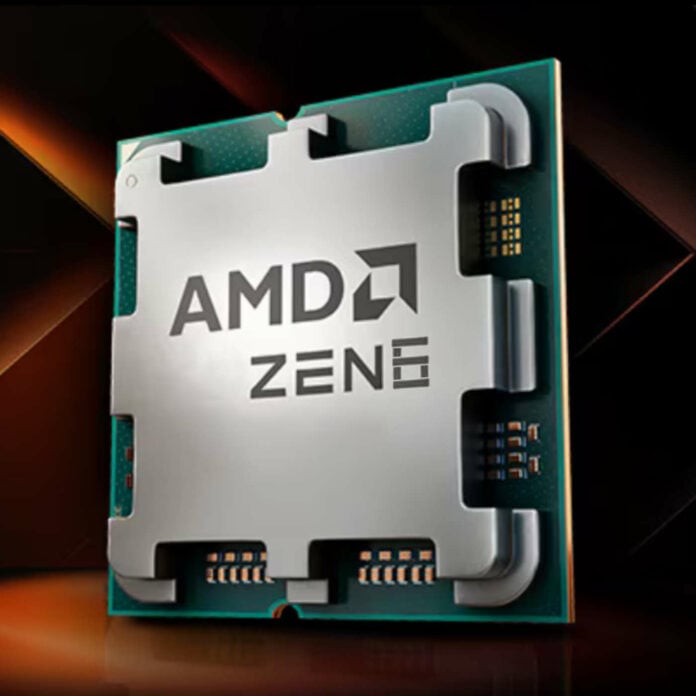AMD is apparently going full-on with its upcoming Zen 6 architecture, packing many improvements over its predecessor. Among these, we have higher clocks going above 7GHz, support for quicker DDR5 memory, up to 12 cores per CCD (Core Complex Die), a larger 3D V-Cache, and improved CCD-to-CCD communication, all while retaining compatibility with existing AM5 motherboards.
According to multiple Moore’s Law is Dead (MLID), sources close to the matter intimate that AMD is currently aiming for above 7GHz with its next-gen desktop Olympic Ridge CPUs. The company is reportedly already able to reach 6.4GHz, seeing 7GHz as a mid-point since more may be possible. If correct, this would represent a massive boost over current Zen 5 Ryzen 9000 series, which maxes out at 5.7GHz. That said, mobile variants will not reach the same frequency as they must adhere to stricter heat and power rules, with MLID sources hinting at surprisingly efficient mobile solutions.
This frequency boost is partly attributed to the use of TSMC’s state-of-the-art N2X node, making the Red Team among the first to offer products featuring it. As AMD skips the N3 node, moving from N4P to N2X, next-gen Ryzen would benefit from three node jumps. Furthermore, by going for performance-optimised N2X on desktop, AMD can deliver high generational IPC gains without impacting the performance of mobile devices, which are set to use TSMC’s N2P manufacturing. That said, AMD will still leverage the N3P node on other products, such as Medusa Point, the successor to Strix Point. Complicated, huh?
Zen 6 is also expected to have noticeable latency reductions in chiplet-to-chiplet communication, which should help games run better on dual-CCD CPUs. Alongside the stackable 3D V-Cache layers previously rumoured, Zen 6 may also mark an end to the performance hit suffered when gaming tasks get scheduled on both CCDs. Depending on how good these improvements are, gamers may soon be able to leverage the full potential of dual-CCD processors.
AMD is expected to launch Zen 6-based processors starting late this year or early next year with its Epyc server lineup, followed by Medusa Point in H1 2026, and desktop Olympic Ridge CPUs sometime after. Regardless of whether the final silicon is able to hit the rumoured 7GHz, as long as the core count, latency, and cache claims are true, Zen 6 should be a beast.
Expect excellent single-core performance from AMD’s next generation of chips.


